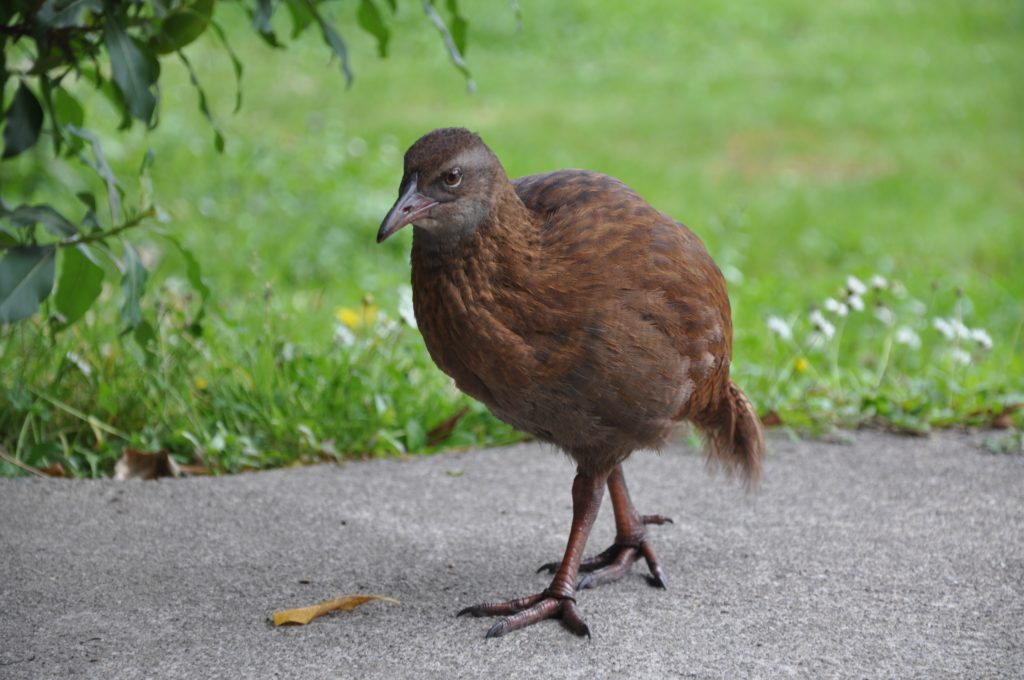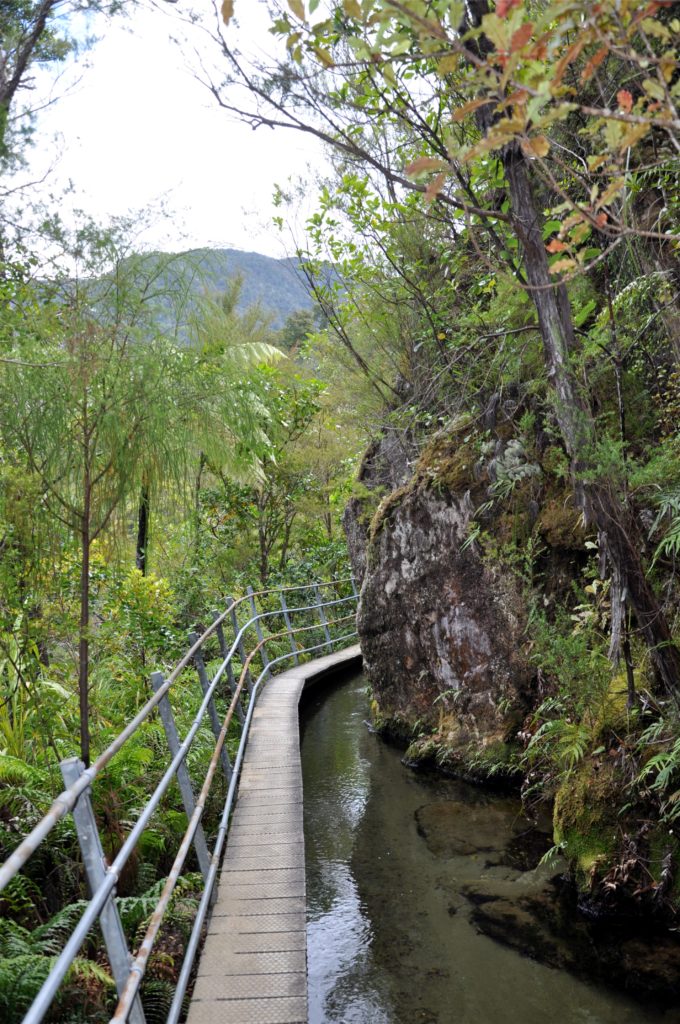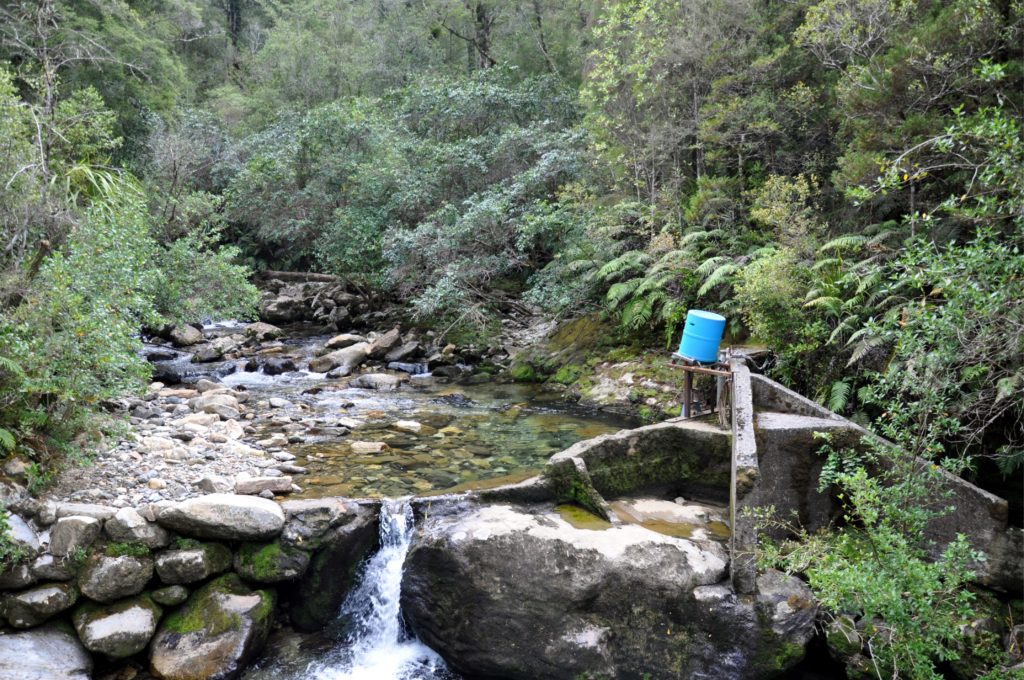The Pupu Hydro Walkway follows part of an old gold-mining water race, which has been restored and is now used for power generation. We arrived at the small car park to be greeted by a Weka, a small, flightless bird that is native to New Zealand.

After watching the Weka poke around the car park for a while, we made our way across the river to start the walk up towards the water race. The initial climb was quite steep and the mud in some sections made it a bit difficult, but eventually the track started to level out and we were able to look out over the valley towards Golden Bay.

After a while we came to the old water race, and for a while the trail becomes the access walk for the water race. We walked along the water race, sometimes on planks over the water and sometime on a narrow muddy trail as the channel clings to the hillside.

The race continues for more than three kilometres (1.8 miles), along the steep hillside. Construction of the race started in 1901 and it was completed by eight men just six months later in 1902.

The race was used for mining for a number of years, but was abandoned in about 1910 when the mines in the area closed. In 1929 the Golden Bay Electric Power Board built a small hydroelectric power station, which took water from the race. Apparently, many Golden Bay residents were uncertain about whether to take the electricity generated and the power board had to run a promotion campaign to convince them of the advantages of this new technology!
After a while, the trail left the water race and we started to wind our way back down the hillside on a more gentle track to the start of the water race and the hydro electric facilities.

We stopped at the small hydro electric power station and were able to look in at all the equipment. The entire power station has been restored, as a fault in June 1981 caused the generating equipment to be extensively damaged and the power board decided it was too expensive to repair, leaving the facilities in disrepair. Now the power station is run by the Pupu Hydroelectric society and still generates electricity using the original, restored equipment.
